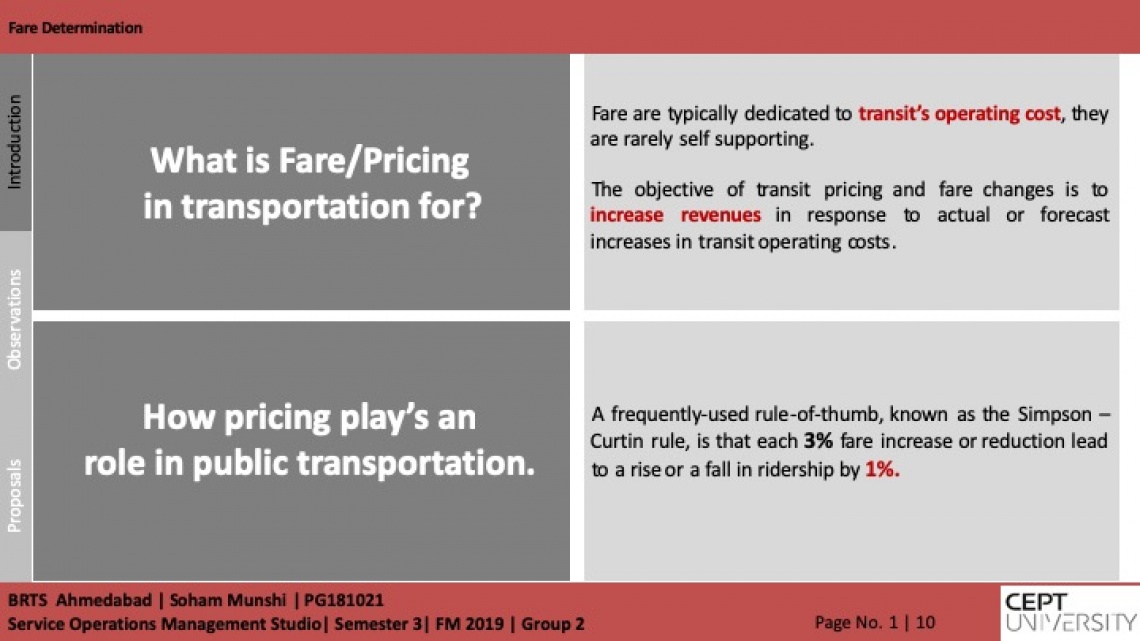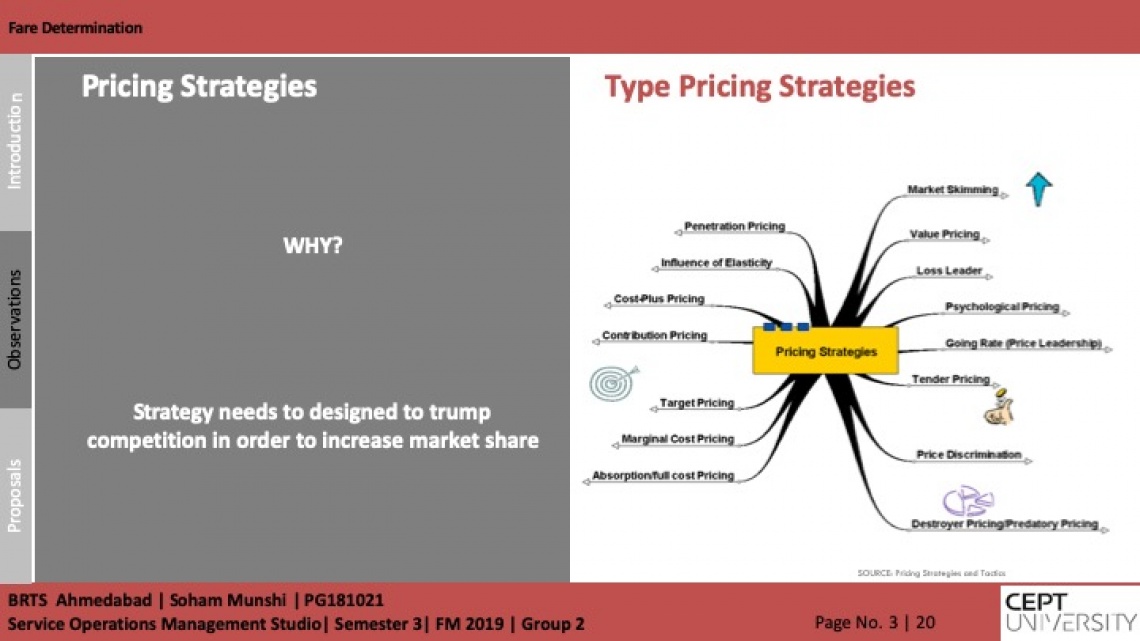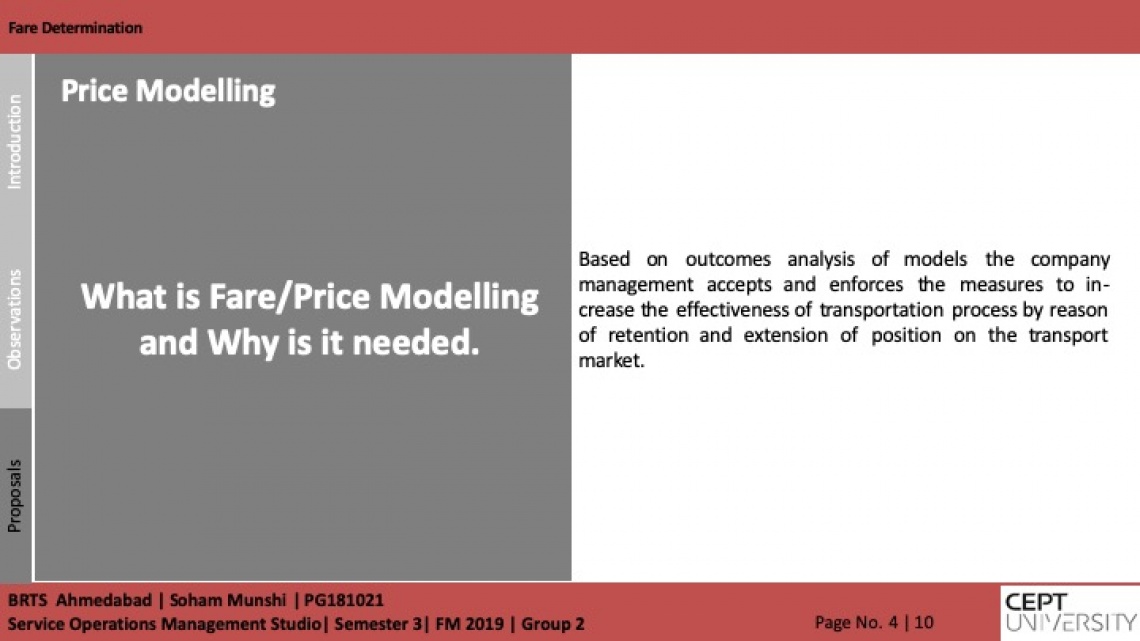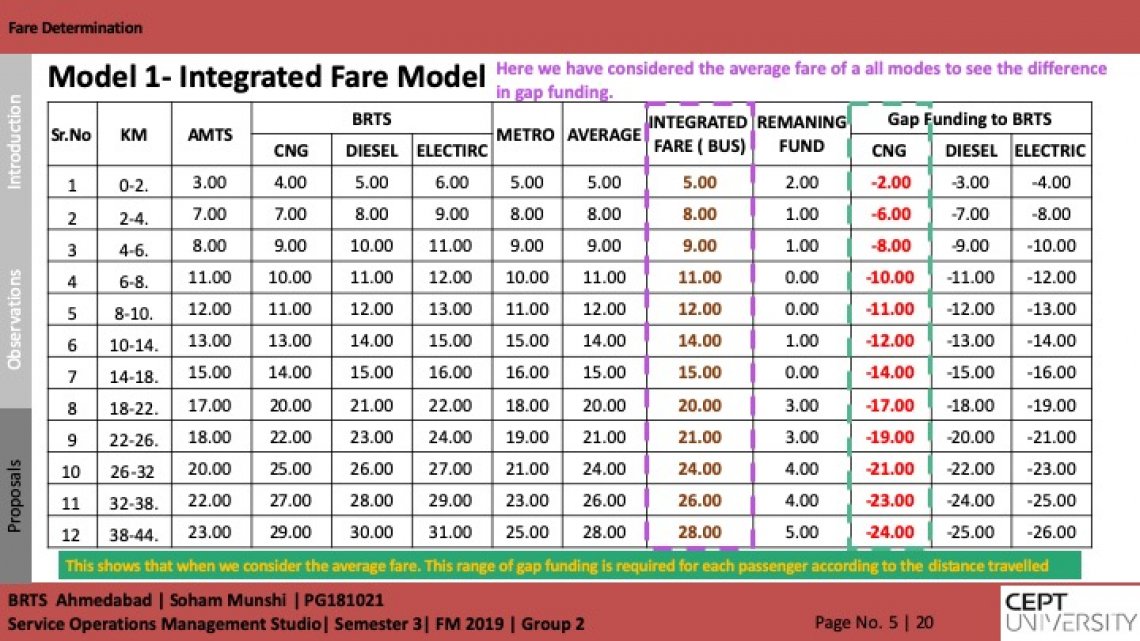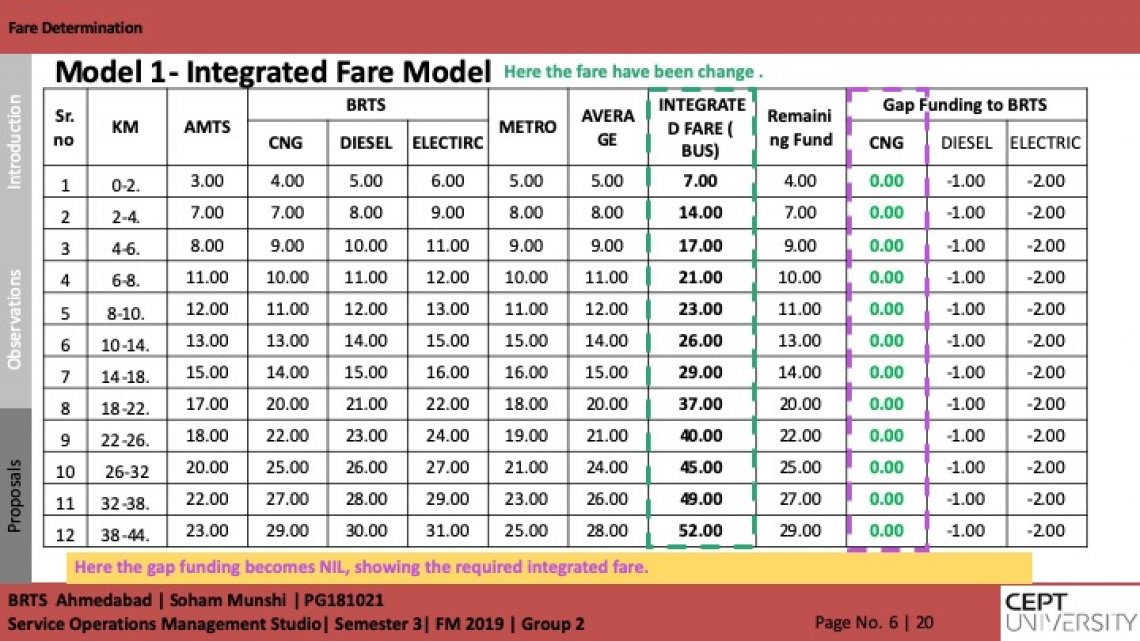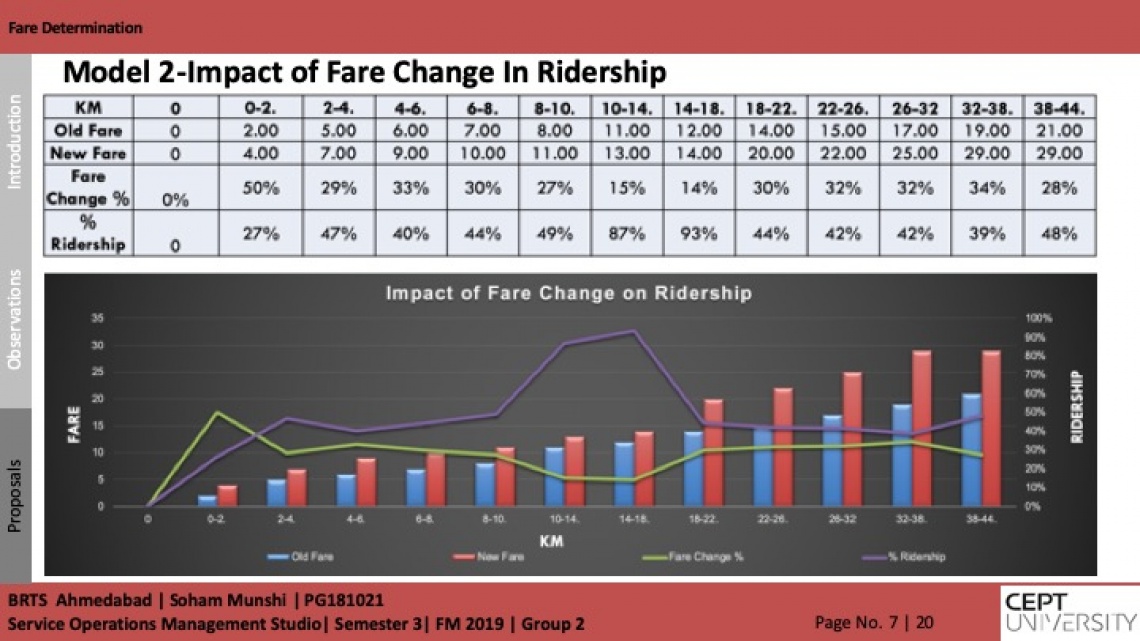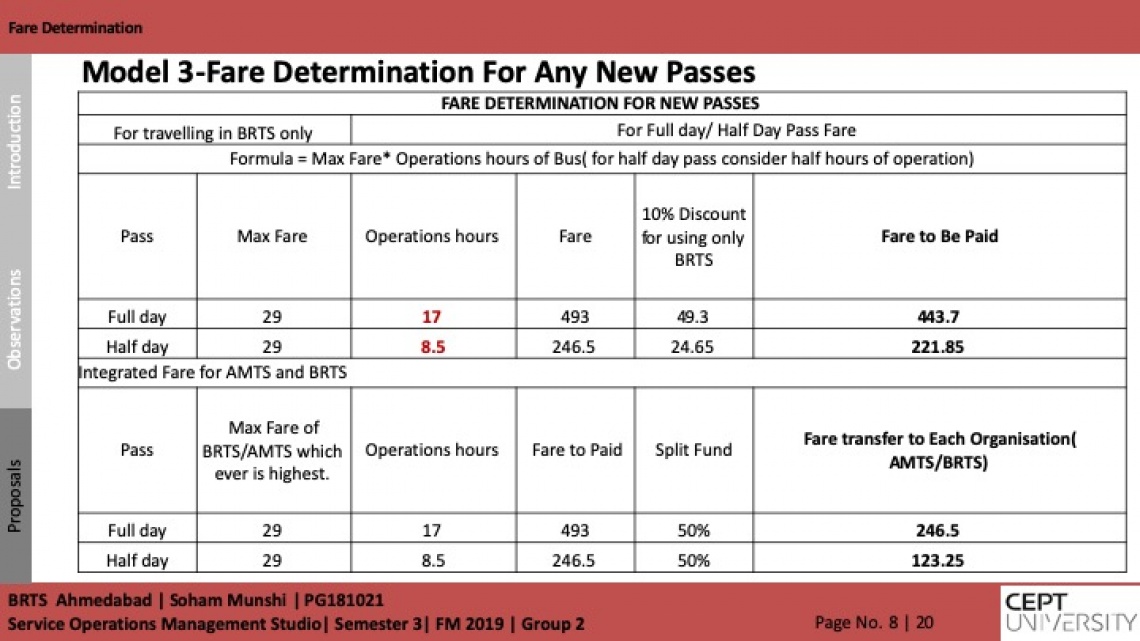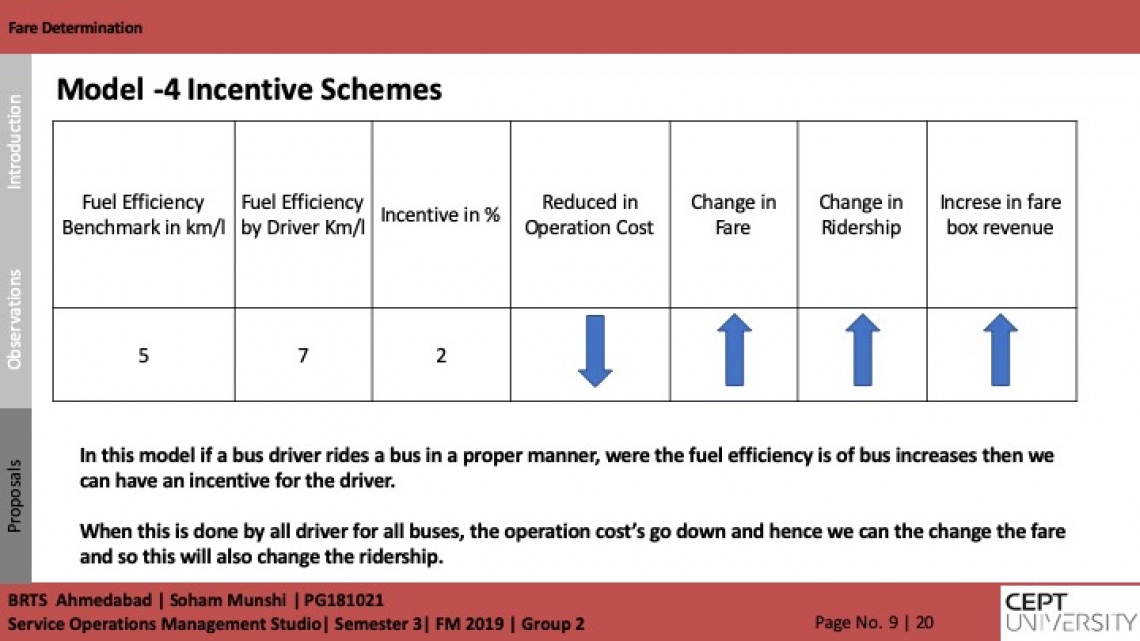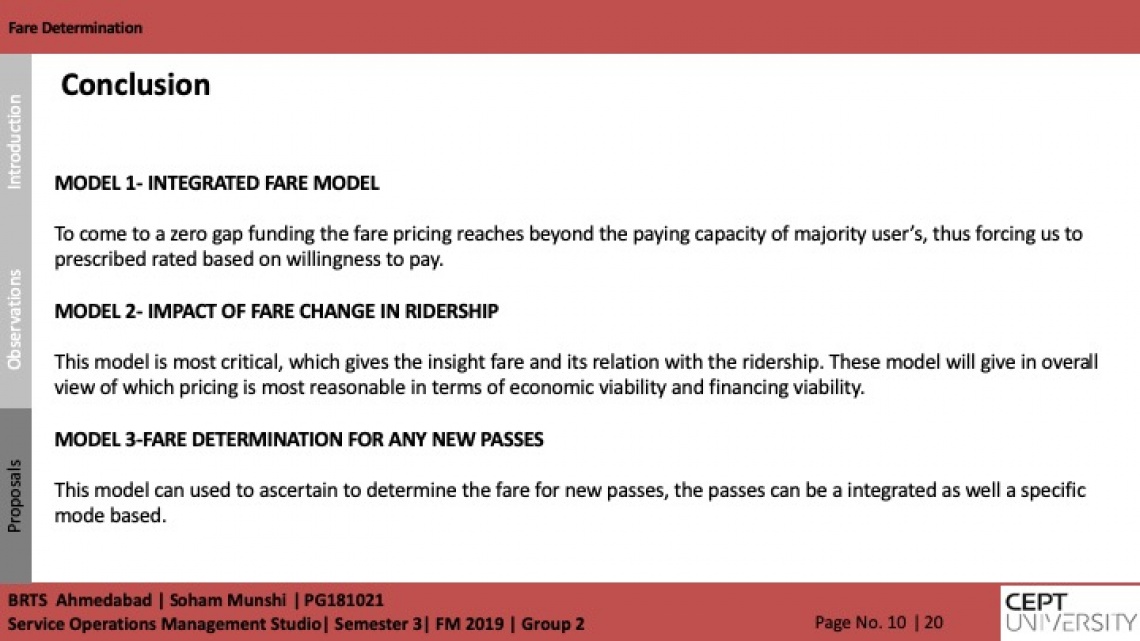Your browser is out-of-date!
For a richer surfing experience on our website, please update your browser. Update my browser now!
For a richer surfing experience on our website, please update your browser. Update my browser now!
Public transport pricing is complex due to the diverse goals of sustainability, lack of overlap between institutions in charge of infrastructure and transport operations, and requirement for integration between multiple transport modes. This study aims at outlining price/fare determination models for public transport that can maximize fare- box revenue. The public transport system is a service-based system for the public, hence pricing and fare should be viable for every citizen. Moreover, the public transport system operates on economic viability rather than financial viability- an objective which prevents the system from being a profit-making enterprise for the transport authority. Pricing is a fare-box revenue system, and is one of the major sources of revenue for the enterprise. Therefore, the determination of fare/price is crucial and must take into consideration passenger willingness to pay, and the socio-economic profile of the region. In India, a large section of the population belong to low income groups, and so public transport fares must be affordable. The transportation costs in an Urban Transport System (UTS) are generally met by the provider of the System. The cost or price depends on various factors including infrastructure, geographical conditions, and administrative barriers. These costs may be either fixed or variable.
